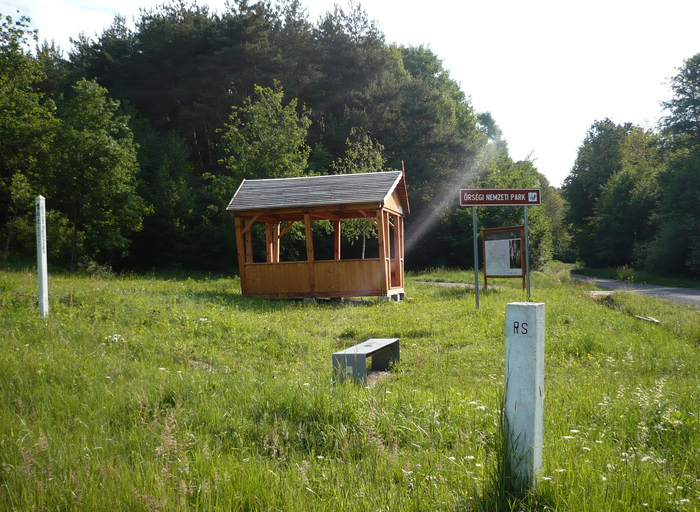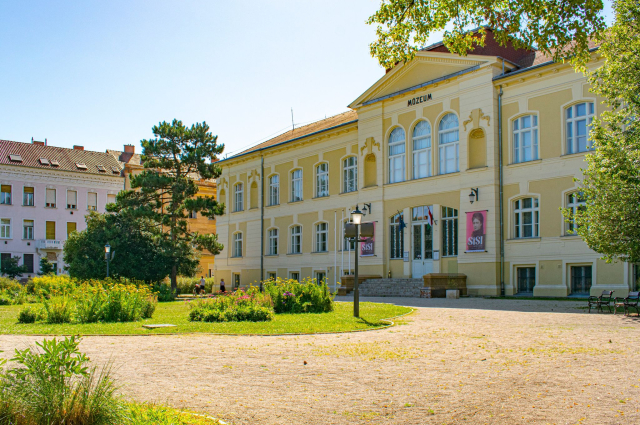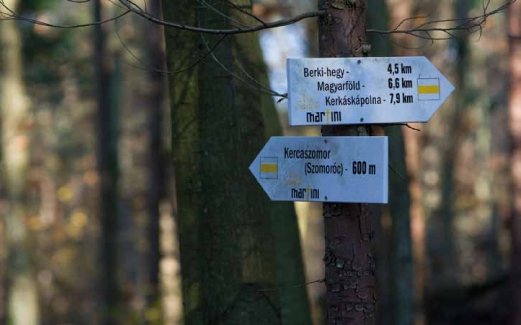
Stop point - Kercaszomor

Kercaszomor is a predominantly Reformed settlement. Kecaszomor was created in 1942 by the merger of Kerca and Szomoróc.
Kercaszomor is a stop on the Via Sancti Martini from Szombathely to Tours in France. The pilgrimage route commemorates the great saint of European Christianity, Saint Martin, born in 316 or 317 in Savaria, now Szombathely. Martin passed through this landscape on his way from his hometown to Italy and from there to Gaul. As a soldier, he shared his cloak with a beggar at the gates of Amiens to set an example of compassion for the poor and the fallen. After leaving the military, he set out on a missionary journey, organised Christian communities and founded a monastery. On his return to Savaria, he baptised his mother. In 371 he was elected bishop of Tours. He was highly respected for his modesty, his directness and the miracles he performed. He died in 397.
The attractions in the municipality affected by the route:
- Szomoróc cemetery with a cork tree. - Sompomorocó village.
- Reformed wooden altar - Boronafalu building from 1877
- Swift cselle nature trail
- Szomorócz nature trail
- Pustatemető, remains of St. Wenceslas Church. The church is mentioned in a document as early as 1208 as an important frontier point. Here was the border of the land of the guards charged with the protection of the western frontier (the Guard).
The ruins of St. Wenceslas Church and the Lustatemető
In Kercaszomor, in a wooded place called Pustatemető, stood the church of St. Wenceslas, one of the oldest churches in Vas County, built in the Árpád era. The first documented mention of the church dates back to 1208. The cult of St. Wenceslas, the patron saint of the Czechs, spread in the 11th and 12th centuries.
The church was built on the edge of the Hungarian territory in the XI-XII centuries, and to the south-west of it, to the Mura, the formerly uninhabited borderland, the lawns of the village. It was a church of the guards (speculatores) living in the valley of the Kercsice (Kiskerka stream). Here the main highway to Italy led to the Iron Gate, where the guards stationed along the Kiskerka stream was located, and then continued past the church of St. Wenceslas, from where it continued to the early fairground of Serdahely, which belonged to the church, until it reached the Mura.
The Church of the Guards was the main landmark in the area. In 1389, a boundary survey of the village of Domafölde gave the location of the village as being near the church of St Wenceslas. In the 15th century, it was one of the three main parishes of the Őrség, along with Őriszentpéter and Hodos. The three parish priests of the Guard, including that of St. Wenceslas' Church, refused to pay the dean's fee (1499), probably because of the power of the Széchys, lords of the castle of Felsőlendava. His first known priest by name was András, who was vice-perfect of the district of Belmura (1503).
The small settlement between Kerca and Szomoróc, where the parish priest of the church of St. Wenceslas and some of his serfs lived, was first called Kápolnáskerca (Kapolnaskyrcha 1452), then Szentviszlo (Zenthwyzlo 1502, Zenthvyzlo 1503). Viszló is the medieval Hungarian form of the personal name Venceslaus (Wenceslaus). After Mohács (1526) it was a flourishing parish for a long time, since the church of Szentviszló included 4 serfs' cottages. In 1549, the priest of Szentviszló was served by only two mercenaries. The plots were still there in 1575, but by 1588 they were uninhabited.
Szentviszló did not play a prominent role at the beginning of the rise of Protestantism. In the 1630-40s, János Bakos was the Reformed pastor. At the end of the Turkish occupation (1664 - 1690) the church was burnt down by the Tatar troops from Kanizsa. In 1690, the year of the liberation, the Protestant inhabitants no longer remembered the patron saint of the church, and had forgotten the name of the place, Szentviszló. However, the ruined church building was soon restored by the people of Kerca and Szomorot (1698). It was a small oriental brick church with a strong tower and a vaulted sanctuary. Before the church, fairs were held, from which the church had some income.
In 1732, during the Counter-Reformation occupation of the church by the military forces, the church of Kerca, together with its counterparts in the Guard and the Tatra Mountains, was again Catholic. The population as a whole continued to hold fast to their Protestant faith against the landlord, the county authorities and the local parish priest. After the Emperor Joseph II's decree of toleration (1781), the church fell into ruin. Its bricks were removed by the reformers to their new church built within the village (1788), and the bell was kept by the parish priest. The cemetery was used for a while, but it too ceased to exist in 1844.
The ruins of the church of St Wenceslas in Szentviszló mark the oldest sacral site in the Guard. The village and its church played such an important role in the history of the Árpád-period Hungarian border defence, the development of the village system and the parish network in the Guard that it is the primary duty of the descendants to preserve its memory.
(Gyula Benczik)
- Kercaszomor


